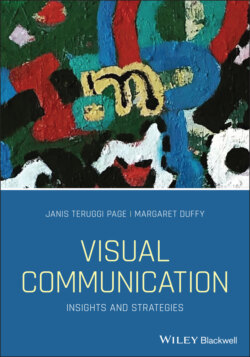Читать книгу Visual Communication - Janis Teruggi Page - Страница 16
FOCUS: A Historical Perspective on Visual Culture
ОглавлениеAnother way to understand visual culture is to look at it historically. This example illustrates the role of perspective. When we compare medieval paintings (1300–1500) to contemporary paintings, we see remarkable differences. People in today's societies are used to seeing two‐dimensional (flat surfaces) that depict three‐dimensional spaces such as a road receding into the distance. In medieval times, Christianity was the primary organizing principle of society and artists presented religious and historical images based on the importance of those portrayed rather than more realistic representations (Willard n.d.). The world depicted in the paintings was the domain of God, not the lived experience of people, as shown in this two‐dimensional artwork from 1295 depicting the Twelve Apostles receiving inspiration from the Holy Spirit:
Source: Art Collection 2/Alamy Stock Photo.
In fact, it's thought that the highly religious yet illiterate people in medieval times would have found 3D representations to be puzzling and even heretical. The Renaissance in the late fifteenth century led to the emergence of interest in science, intellectual pursuits, and the more realistic depictions of the world. With this societal change, artists began achieving three‐dimensional effects using a whole range of techniques including linear perspectives, in which the “illusion that objects appear to grow smaller and converge toward a ‘vanishing point’ at the horizon line” (Jirousek, 1995). This is illustrated in Rembrandt's 1632 painting, The Abduction of Europa:
Source: GL Archive/Alamy Stock Photo.
